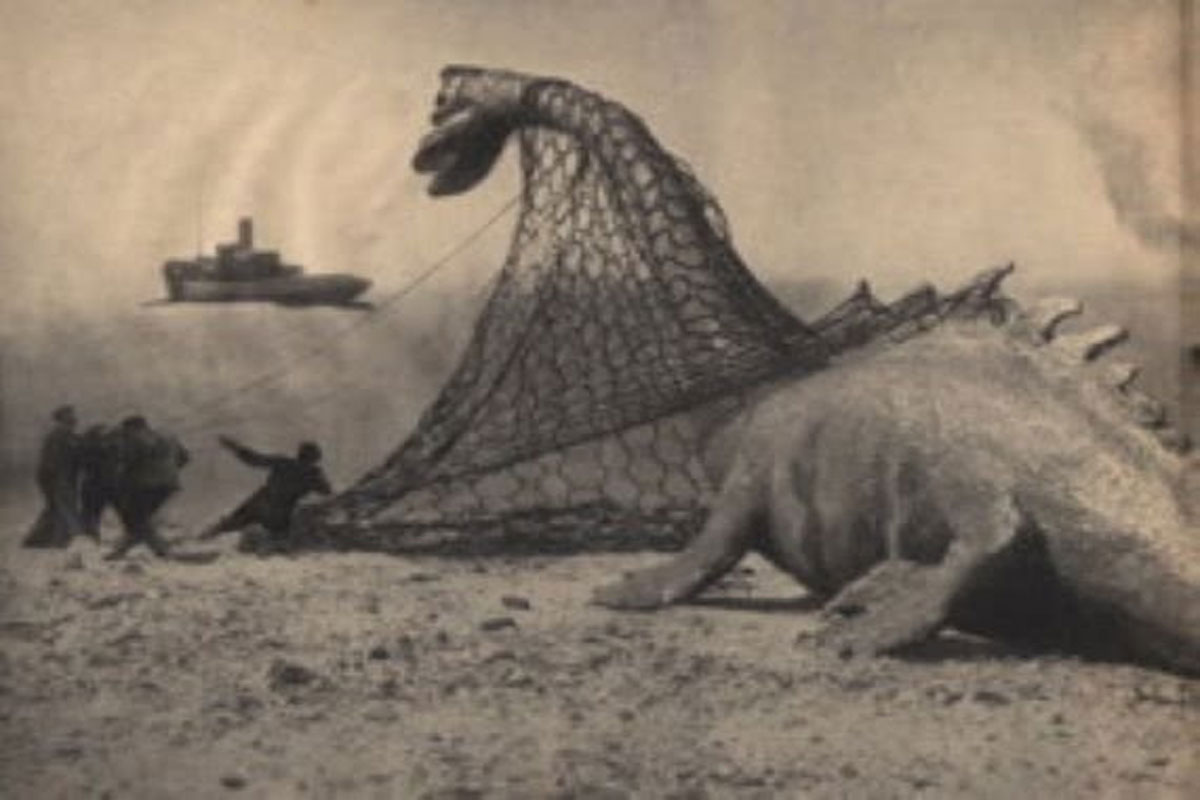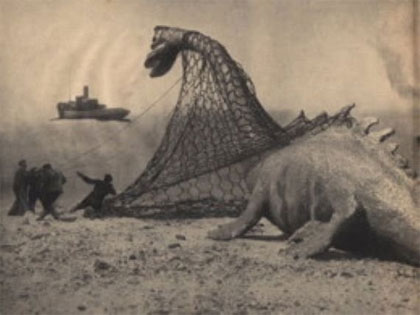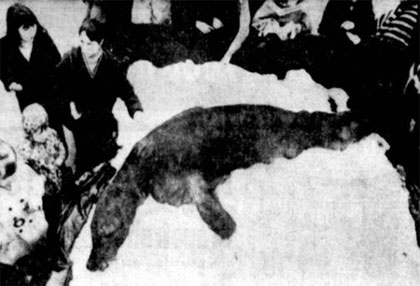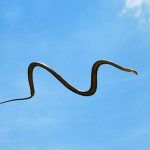
Amazing hoaxes of physical evidence for the Loch Ness Monster
Brent Swancer August 10, 2021
Ranking high among the likes of Bigfoot and the Chupacabras as one of the rock stars of the cryptid world must certainly be the legendary Loch Ness Monster of Scotland. Here we have a lake monster mystery that has stood the test of time, and as with any other mysterious beast one of the main goals has always been to find physical evidence of its existence. Throughout the years there have been many claims of this, but on many occasions it seems that those responsible for these discoveries would be happier just faking it. Here we get into some of the greatest hoaxes involving finding purported physical evidence for the Loch Ness Monster.
One of the all-time great Nessie hoaxes occurred way back in 1934. On March 31 of that year, the German newspaper Illustrirte Zeitung ran an amazing article that caught people’s attention right away, as it claimed that Nessie had actually been captured! According to the piece, sensationally titled Loch Ness Monster Captured!, a group of monster hunters had supposedly spent months looking for the beast, scouring the loch for any sign of it, and one day they spotted it climbing onto shore, presenting a unique opportunity to capture it. The hunters apparently had their fishing boats circle Nessie, forming a perimeter that would keep it on shore as they used a heavy-duty steel net to catch it. The article reads in part:
Teams with huge steel nets formed a line. The capture, against all expectations, turned out to be relatively easy because of the animal’s lack of experience on land (a fact that was also observed in the giant lizards on the Galapagos Islands). The two look-outs, the Irishman O’Widow and the Scotsman Rurson Depp were made honorary members of the Institute of Zoological Research. In Edinburgh the monster was brought to the airship hangar in the Scottish capital, the only room that was large enough for the animal. Hundreds of thousands lined the road leading from the port to the airship hangar. Surveying engineers of the technical college determined the size of the giant beast to be 31 meters in length and 7.8 meters in height. It also had an impressive total weight of around 36 tons.
Never has such a high sum been offered for a living animal as for the dinosaur, which gained world fame as the “Loch Ness monster”. The adventurous capture of the monster and its transport to Edinburgh filled the reports of the English papers for a week — and now the offer of the American “king of the showmen” Barnum excites the public. But it can be expected that scientists will passionately object to Barnum’s offer of 2 1/2 million dollars in gold and the unique animal will remain in the British Isles, where the tourist influx will yield a multiple of that amount.
There was even a photo of the beast being captured, taken by the Scottish Wildlife Photographer MacKeenkool. When the story first hit it caused a lot of excitement, with many people apparently ignoring not only the fact that the photo looks incredibly fake, but also that the article ran through April Fools Day. After a surge of public calls to the paper for more information, they were forced to concede that it was all an April Fools prank, and even then, some people thought it was real and being covered up. Looking back at the picture and the story today, it is hard to believe anyone could have possibly taken it seriously, but it turned out to have caused a major stir at the time.
 The photo of Nessie captured
The photo of Nessie captured
This would not be the last major hoax involving having the body of Nessie. On Friday March 31, 1972, a team of Loch Ness Monster researchers from the Loch Ness Phenomena Bureau were having breakfast at a lakeside hotel, where they had been staying during one of their searches. Since everyone at the hotel knew who they were and why they were there, the hotel manager immediately went to speak to them when he allegedly received an anonymous call from someone saying they were in the midst of having a monster sighting right there at the hotel. When the team heard the news, they immediately went outside and were greeted by the sight of a large, dark object out in the water about 300 yards offshore.
The team then excitedly got into their boat and headed out towards the mysterious object. Around 20 minutes later, the team returned to shore, only they were apparently not alone. Behind their boat, being dragged through the water was what appeared to be the body of the monster itself, which was described by witnesses as being 12 to 18 feet in length, green in color, and looking like it was “half-bear and half-seal” or a cross between a walrus and a seal, with a bear-like head, flat ears, and large teeth. It did not take long at all for the sensational news to go global that the Loch Ness Monster had not only been found, but a carcass obtained, and reporters were tripping over themselves to get out to the Loch to check it out. When the journalists began rushing to the area, locals confirmed that a bizarre creature had indeed been pulled out of the lake, with some even claiming to have actually touched it. When a zoologist by the name of Don Robinson, of the Flamingo Park Zoo, was interviewed by reporters, he made a spectacular claim, saying:
I’ve always been skeptical about the Loch Ness Monster, but this is definitely a monster, no doubt about that. From the reports I’ve had, no one has ever seen anything like it before… a fishy, scaly body with a massive head and big protruding teeth.
 The “Nessie body”
The “Nessie body”
Disappointingly, none of the reporters were able to actually see the creature for themselves, as they were told that it had been loaded onto a truck to be transported to the Flamingo Park zoo to be studied. Unbeknownst to them, there was an obscure law at the time that forbade the removal of any strange or unidentifiable creatures from Loch Ness, no doubt to keep people from perhaps catching the monster and making off with the specimen. Police reportedly then chased down the transport truck with sirens blasting, after which the zoologists obediently pulled over and showed the police officers what they were carrying. According to the report at the time, police confirmed that it was indeed a never-before-seen creature with reptilian green, scaly skin. The carcass was then taken to a nearby research facility where it could be studied, and a Michael Rushton, general curator of the Edinburgh Zoo, soon arrived to examine the strange beast. The media went absolutely nuts waiting for the verdict, with the discovery dominating the news at the time. Unfortunately, it would not be what everyone had been hoping for. Rushton did not take long at all to identify what the creature was, and although it was certainly an odd discovery in the Loch, it was far from an unknown mystery beast. Instead, the carcass turned out to be that of a bull elephant seal. Rushton would say of his examination:
It is a typical member of its species. It’s about 3 to 4 years old… I have never known them to come near Great Britain. Their natural habitat is the South Atlantic, Falkland Islands or South Georgia. I don’t know how long it’s been kept in a deep freeze but this has obviously been done by some human hand.
With the verdict out on the body of the “Loch Ness Monster,” the culprit behind the hoax finally stepped forward to admit what they had done. It turned out that the hoax had been perpetrated by a John Shields, one of the Flamingo Park Zoo’s educational officers, and that the elephant seal had been recently acquired during an expedition to the Falkland Islands. The seal had lived at the Dudley Zoo before dying shortly after. Shields had then seen an opportunity to play a practical joke on the team of Loch Ness researchers whose arrival at the Loch had been met with much fanfare. The elephant seal carcass had been slightly altered to make it look stranger, with its whiskers shaved off and stones stuffed within its cheeks, after which it had been put into the Loch, with Shields himself being the one who had phoned the hotel with the sighting. The timing of the media frenzy that he knew would ensue was purposely planned to be April 1st, April Fool’s Day, although this had apparently gone over everyone’s head. Shields said that he had realized the joke had gone too far when the creature had been spirited away to be studied and a police chase had been involved, and he also expressed his surprise that its appearance had been so dramatically exaggerated by witnesses. The elephant seal was most certainly not covered in green scaly skin and was only around 9 feet long rather than the widely reported 12 to 18 feet.
 Elephant seal
Elephant seal
With the announcement that the whole thing had been merely an elaborate April Fool’s prank, the carcass was released back to the Flamingo Park Zoo, where it was displayed on ice for a time before being disposed of. This is a case which is remarkable for the fact that before the whole fiasco had been outed as a hoax, eyewitnesses including local citizens, zoologists, and police officers, none of whom had been in on the hoax, had all given descriptions of a creature that bore very resemblance whatsoever to what it actually turned out to be. Did the sensational news and expectations cause them to exaggerate or outright fabricate their descriptions to more fit in to what they hoped the carcass to be? Were they somehow influenced by the media storm raging around them? Of course, an elephant seal would be a very unusual thing to find in Loch Ness, and might take some off guard, but it is interesting how warped and twisted perceptions and descriptions of the corpse became when it was dragged to shore and in the days leading up to the announcement that it was just a joke. It seems that expectations, excitement, and media sensationalism can in some cases all profoundly affect the way some eyewitnesses view a phenomenon.
Moving into later years we come to a weird case of a hoax that didn’t aim to fake the Loch Ness Monster, but to rather fake a debunking of it. In April of 2001, a major expedition was launched at the Loch, called Operation Cleansweep and led by Jan Sundberg of the Global Underwater Search Team (GUST). The crew would spend over 50 hours using the most advanced sonar gear to sweep practically every inch of the Loch, as well as set up traps in the hopes of catching a specimen. Although their search for the monster was fruitless, they would find two very large, dead eels in the surf on shore, both of them measuring over 6 feet long and far larger than any known eels in the lake. This was very exciting at the time, because of the team’s theories was that the Loch Ness monster might be some large species of eel, and this seemed to prove it. However, it wasn’t meant to be.
 One of the giant eels
One of the giant eels
When the two dead specimens were brought in to be analyzed they were found to be conger eels, which is a large species exclusively found in saltwater. Also rather odd was that it was found that one of the eels had been feeding on mackerel, also a marine species not found in the freshwater Loch Ness. Although they speculated that the eels could have gotten into the loch through an underground tunnel to the sea, it seemed more likely that someone had hoaxed them by leaving the two dead eels to be found. Pranked and played for fools, Operation Cleansweep would go home empty-handed.
In 2003 we have the case of a by a 67-year-old pensioner by the name of Gerald McSorley, from Stirling, who claimed that he had been wading in shallow water at the Loch when he had literally stumbled over a fossil that clearly showed four perfectly preserved vertebrae set in limestone. McSorely believed he had found a fossil of Nessie, and would say of his discovery:
I literally tripped over the fossil in the water. When I put my hands down to steady myself I saw something unusual and picked it up. Once I had cleaned off about an inch of green algae, and I could see the texture of the bone, it became clear I had an important fossil. I have always believed in the Loch Ness monster, but this proves it for me. The resemblance between this and the sightings which have been made are so similar.
Realizing that he had found something pretty special, McSorely had the fossil sent to the National Museum of Scotland, where it was determined to be the remains of a 150-million-year-old plesiosaur, the first time anything like that had ever been found in Loch Ness, and seen by Nessie hunter as possible evidence that something like the Loch Ness Monster had once lived there. Dr Lyall Anderson, a curator at the National Museum, would say of the fossil.
The find is very interesting because nothing of its nature has ever been discovered on the shores of the loch before. It could be that further remains exist in the same area. The closest we have is the discovery of plesiosaur fossils at Eathie on the Moray Firth 150 years ago.
 The “Nessie fossil”
The “Nessie fossil”
When the news hit it caused a lot of waves in cryptozoology and amongst Nessie hunters in particular, who kept the location of the fossil discovery top secret and carried out several searches of the area without success. While the news of the “Nessie fossil” was widely sensationalized and played heavily into the angle that this was real evidence of plesiosaurs having once lived in the lake, scientists were a bit more skeptical, realizing that it was likely that someone had simply planted the fossil there as a hoax. This was even the conclusion of some cryptozoologists in the end, with Gary Campbell, the president of the Official Loch Ness Monster Fan Club, conceding, “On the other hand it could have been planted – probably not by the man who found it, but we have a history of things being planted on the loch conveniently for people to find.”
Finally, we have the 2005 discovery of what was largely advertised as “Nessie’s tooth.” Two American students who had been visiting Loch Ness would claim that they had come across a mutilated deer carcass on shore, torn apart as if by a very large wild animal. When they took a closer look, they found lodged within the ribcage of the carcass what appeared to be a massive, 4-inch long barbed tooth of some sort. They took photos of the tooth and then claimed that it and a video they had taken were both confiscated by a passing local water bailiff and brought into the possession of the Scottish Highland authorities. The students went about posting their pictures online and the images of Nessie’s tooth went viral, even apparently capturing the attention of Forensics investigator Bill McDonald and paleontologist George Blasing, who both came to the conclusion that the tooth was real. Blasing would say of it:
There is no way these students could have faked this discovery. Between the barbs, the coloration, and the socket root system, this tooth belonged to a very large aquatic animal. And it is not a plesiosaur.
 The “Nessie tooth”
The “Nessie tooth”
It was all huge news at the time, with McDonald gaining a great amount of interest and fanfare at the time. McDonald was so sure it was the find of the century, in fact, that he went on a crusade to get it back, even going as far as to offer a $100,000 reward for its return. He would say of his new found celebrity and mission to get the tooth back:
I received interest from several museum curators, the producer of an Emmy nominated documentary, marine biologists, and one very interested private investor. All are now convinced this discovery is real, and have committed funds for information leading to the return of the tooth by the Highland Authorities. We are also considering a lawsuit. I welcome the opportunity to finally identify and resolve the Loch Ness Monster mystery.
If it seems too good to be true, then that is because it was. The holes first began appearing in the story when several wildlife biologists who looked at the pictures insisted that it was nothing more than the antler of a roe muntjac deer. It was shortly after this discovered that the students’ story and their website had all been a viral marketing and publicity stunt in order to promote a horror novel by Steve Alten titled “The Loch,” which was released right as this was all happening. Indeed, Alten had appeared on the radio show Coast to Coast AM as well, claiming that he had purchased exclusive rights to the story of the Nessie tooth, and making it even more suspicious was that the book’s publisher had paid for a highly publicized monster hunting expedition carried out by McDonald. In the end, it was nothing more than a viral marketing stunt that had managed to fool pretty much everyone for a while, although some people still continue to believe that the tooth was real, and that Alten’s book is merely based on it.
This and the other cases we have looked at here just go to show that there are many who would like to come forward with sensational findings at Loch Ness, but as I always say keep an open mind but not so open that your brain falls out. There will no doubt be other hoaxes perpetrated within cryptozoology, muddying the waters, but in order to get to the bottom of these mysteries we need a clear head and keep focused on irrefutable evidence that will guide us to the future rather than fake news and smoke and mirrors.
MU*























